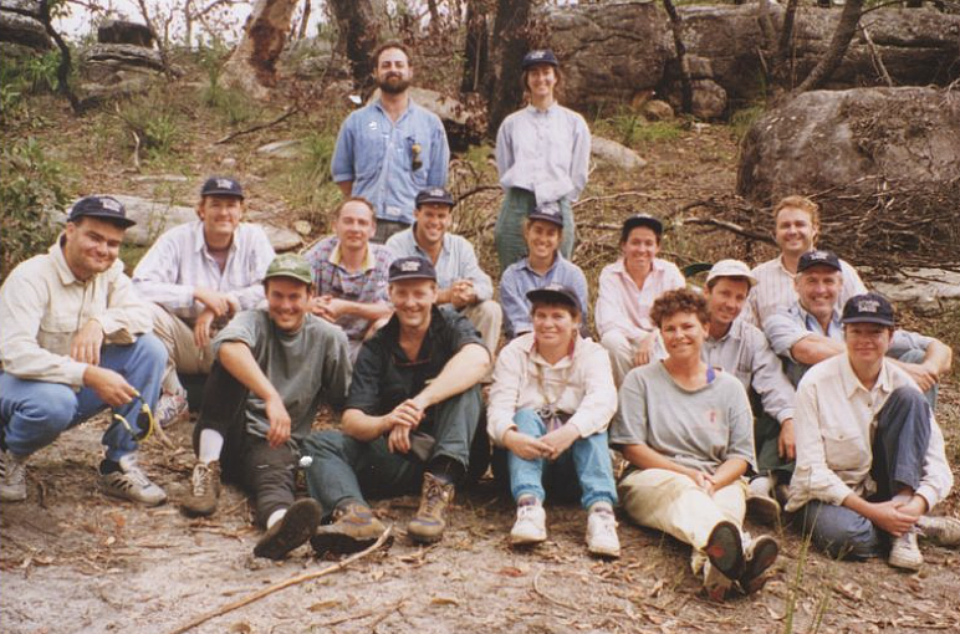
ICDA and BoardPro partnership unlocks digital governance tools for not-for-profits nationwide
Posted on 10 Dec 2025
Adele Stowe-Lindner, Executive Director, Community Directors The Institute of Community Directors…
Posted on 08 Jul 2024
By Andrew Leigh

Charities Minister Andrew Leigh provides a snapshot of the results of his office's investigation into the issues that matter most to the charity and not-for-profit sector.
It’s easy to forget the scale of Australia’s charity sector.
Overall, 1.4 million people, or 10.5 percent of the workforce, are employed by charities. There are as many people working for charities as working in agriculture, mining and manufacturing put together.
Charities are active in education, human services, health, arts, sport, the environment, international development and much more.
To better understand the priorities of charities, I recently carried out one of the largest-ever surveys of the Australian charity sector. In total, more than 2000 charities responded, providing a broad cross-section of the community sector, and insights into the issues that are top of mind for charities.
What are charities most concerned about? Let’s start with small charities, those with annual revenues of less than $500,000 per year. Among the top areas of focus for smaller charities are arts and culture, human rights, animal welfare and advancing religion.
These charities top priority by a wide margin is attracting sufficient philanthropic funding and enough volunteers.
Half of Australian charities have no paid staff, and many small charities operate out of people’s homes rather than a formal office.
The second-highest priority for small charities is government funding, contracting and tendering, while the third-highest priority is leadership and staff development.
Let’s look now at medium-sized charities – those with revenues of between $500,000 and $3 million.
Medium-sized charities work in areas such as education, the environment and reconciliation.
The top priority for these charities is government funding, contracting and tendering. This reflects the engagement of medium-sized charities with government programs, which may involve the delivery of government services.
Their second-highest priority is philanthropy and volunteers, followed by measurement, outcomes and quality of services.
The largest charities are those with annual revenues above $3 million.
Among the most common focus areas for large charities are health and social welfare.
For them, the top priority is measurement, outcomes and quality of services, suggesting a strategic emphasis on demonstrating impact and service quality.
The next highest priority for large charities is government funding. Where philanthropy and volunteers are the highest priority for small charities, they rank only sixth for large charities.
Other interesting patterns can be seen across charity types.
Impact investing tended to be ranked as a low priority by most charities – perhaps reflecting the small scale of impact investment in Australia at present.
The same is true of information technology, communication and marketing. Many charities know they should be doing more to upgrade their computer systems and improve their cyber resilience – but the challenge of securing sufficient funding looms larger for most organisations.
"Building community starts with understanding the needs and goals of charities."
To address the long-term challenges of the charity sector, the Australian Government has tasked the Community Services Advisory Group in the Department of Social Services to develop a blueprint for Australia’s charities.

The group includes 27 member organisations, including Anglicare, the Australian Services Union, the Benevolent Society, Carers Australia, Foodbank, Relationships Australia and Volunteering Australia.
With hundreds of years of collective experience in building a more caring and connected nation, these organisations are well placed to consider how to strengthen the community sector.
Our government’s decision to commission a charity sector blueprint follows a decade of neglect of charities.
The former Coalition government’s war on charities led to three open letters from charities to successive Liberal Prime Ministers, and wasted countless hours as charities pushed back against attacks on their right to advocate on behalf of the vulnerable.
A charity sector blueprint is just one of the many ways that our government is working constructively with charities to forge a more connected Australia.
Through the Productivity Commission’s once-in-a-generation review of philanthropy, we have set a target to double giving by 2030. Across the Albanese Government, ministers respect the role of charities, and value their role in communities and the public debate.
Building community starts with understanding the needs and goals of charities.
Since being appointed as Assistant Minister for Charities, I have carried out Australia’s largest ever charity sector consultation: holding charity sector town halls in every state and territory (in most cases, on multiple occasions).
The charity sector survey is another way of learning more about the sector and how best to serve it.
As stoic philosopher Epictetus observed two millennia ago, ‘We have two ears and one mouth so that we can listen twice as much as we speak.’
The wisdom of charities helps shape the Australian Government’s priorities, as we work to build a fairer society and a stronger economy.
Andrew Leigh is the Assistant Minister for Charities, and co-author with Nick Terrell of Reconnected: A Community-builder’s handbook.

Posted on 10 Dec 2025
Adele Stowe-Lindner, Executive Director, Community Directors The Institute of Community Directors…

Posted on 10 Dec 2025
The Australia Institute has called on the federal government to force Australian businesses to be…

Posted on 10 Dec 2025
Economic empowerment is essential to enabling recovery, restoring agency and preventing future…
Posted on 10 Dec 2025
A long-time advocate for rough sleepers in northern New South Wales has been named her state’s…

Posted on 10 Dec 2025
What a year 2025 has been, particularly at a national level where the Parliament and politics as we…

Posted on 10 Dec 2025
Anyone working in an organisation knows it: meetings follow one after another at a frantic pace. On…

Posted on 10 Dec 2025
As a qualified yoga instructor who learned the practice in her hometown of Mumbai, Ruhee Meghani…

Posted on 10 Dec 2025
Community Directors trainer Jon Staley knows from first-hand experience the cost of ignoring…

Posted on 10 Dec 2025
Stressed, overwhelmed, exhausted… if you’re on a not-for-profit board and these words sound…

Posted on 10 Dec 2025
The Institute of Community Directors Australia trains over 22,000 people each year, which gives us…

Posted on 09 Dec 2025
The late Sir Vincent Fairfax is remembered as a business leader, a chairman of AMP, and an active…

Posted on 08 Dec 2025
A pioneering welfare effort that helps solo mums into self-employment, a First Nations-led impact…